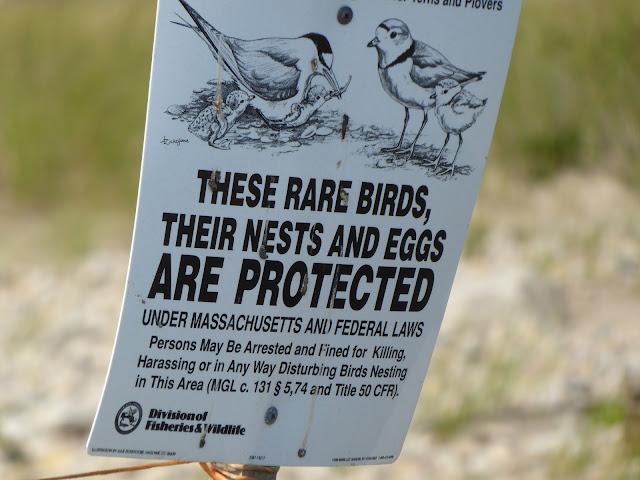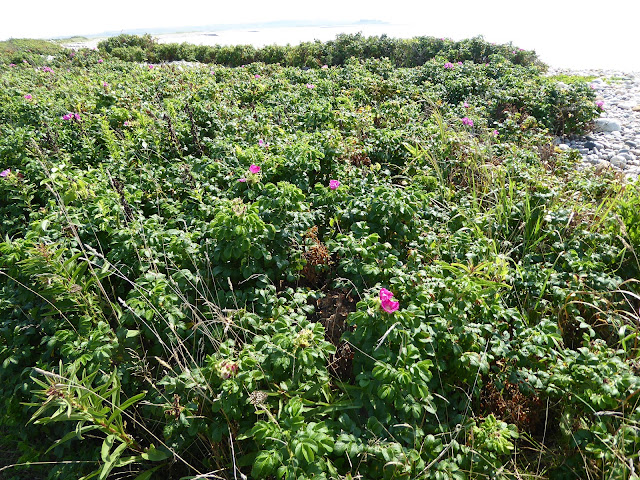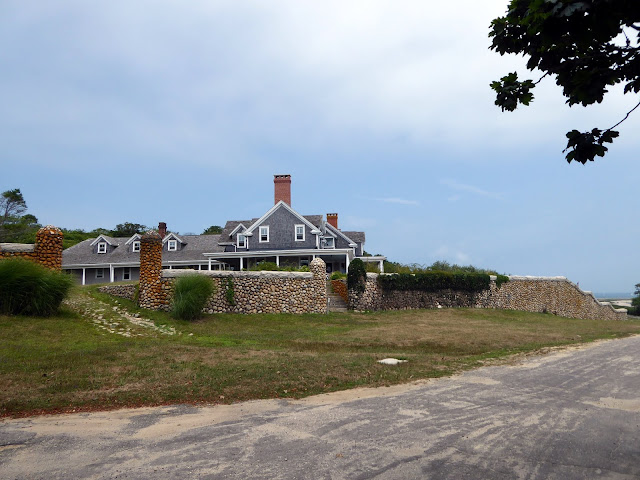I have sailed all the coast that's visible, except Connecticut and most of the inside of Cape Cod Bay.
My summer adventures have declined over the years, until the big boat went into the water only once or twice a season, and then not at all. I’m pushing sixty, out of shape, and have had job reverses, so my enthusiasm for sailing adventure isn’t what it has been, and readying the boat increasingly feels like work. My boys have outgrown the desire to crew. I still get out for short jaunts by kayak once in a great while. I sailed my smaller cabin boat to Prudence Island last spring, and made an abortive attempt by kayak on the Wampanoag Historical Canoe Passage last August, but when I began clearing accumulated junk off the big boat it had not been out of the garage in three years.
Although I didn’t have the wanderlust of past years, a growing sense was overtaking me that the Beatrice Ann, my first and largest boat build, needed to feel wind and saltwater again. I knew the journey should be more than an overnight simply to be worth the effort of preparation. It wouldn’t do just to revisit old haunts, but I also didn’t want to drive far to reach unfamiliar waters. I knew I needed a destination worth the visit. These limited my options: alone and with one or two of my boys I had sailed just about the entire coast of Massachusetts and Rhode Island, and the islands from Block Island to Martha’s Vineyard to Nantucket, over the thirteen years since I had finished building the Beatrice Ann. Two ideas presented themselves: either a trip to Martha’s Vineyard, which has enough shoreline, things to see and do, and good public transit to make up for the familiarity bred by past trips; or a circuit of Buzzards Bay, which we had only partially accomplished one time years ago. One Buzzards Bay port in particular--Marion--would be worth revisiting. In the first instance, the boat would be transportation, in the second, it would be integral to the experience. I chose the latter.
Buzzards Bay, adjacent to Cape Cod.
I figured to do a counterclockwise circuit of Buzzards Bay, beginning at Hoppy's Landing in Fairhaven outside New Bedford Harbor. (The Harbor has a nice ramp, but also a tricky hurricane barrier that is difficult to sail through unless current and wind are just so). I briefly considered launching in Narragansett Bay, perhaps at Fogland in the Sakonnet River, to make more of an adventure of it, but decided I wanted to maximize my time and energy in Buzzards Bay. I figured to be out a leisurely three or four nights.
There was a tremendous amount of work to do to get Beatrice Ann ready for sea. Small animals had made it there own for several winters. Lockers and the gear stored in them needed to be cleaned and aired. The mainsail I had mistreated until it needed major conservation. Various of the wood bits needed to be disassembled, sanded, varnished and reassembled. I wanted to take another crack at shelter in the cockpit from sun. I discovered a significant crack in the transom that I probably caused when backing the trailer into the garage years ago. Navigation lights flickered, and the new compass needed to be wired in for light, so the electrical system needed work. A new electrical connector from trailer to car was wanted. The trailer registration had expired years ago.
Navigating the enclosed waters of Buzzards Bay shouldn’t present too many challenges, but experience taught me not to be cavalier. The old dedicated gps was about dead, so I loaded a good app on my new tablet and learned to use it; tablet, new phone and fancy new camera would need protection from deadly saltwater. There were charts to run my finger over, and a cruising guide with tips on anchorages and getting ashore to pore over.
I began working through the long list over several weeks. I had thought this time to have the freedom to wait on weather rather than scheduling a departure and making do whatever the conditions, but my long preparations forced my hand: I needed to finish the trip before the second full week in August.
I set out early in the afternoon on Monday, August 7th in the middle of a heat wave. Strong winds and high waves dictated that I leave under reduced sail. My boat--a cat ketch--has an unusual rig in which normal reefing doesn’t work very well, but I can instead keep the mainsail furled and sail with mizzen alone moved into a special step. A big disadvantage is that it cannot be done on the fly; I must be anchored or on the trailer to move the mast.
The first day’s sail was meant to work to windward west along the coast and then cross the bay to Cuttyhunk, a small island with a good harbor. Wind and waves made for slow going, and there was near-constant spray: I shivered with cold for hours, despite listening to the weather radio warn of overheating. The occasional wave broke over the coaming, leaving me dripping and sputtering and the cockpit floor awash until the automatic bailer could clear it all out. Instead of trying to stay near shore, I instead tacked repeatedly across the bay trying to make better progress. As night fell, I was still short of my destination. Plan B, created on the fly, was to snug into the lee of Nashawena Island, just a mile or so short of Cuttyhunk Harbor. The north shore of Nashawena slanted deeply into the water only a few dozen yards from shore, so I would need to get close to the beach to anchor in sufficiently shallow water. I didn't carry my waterproof camera, so I have no photos of that day.
At 9pm it was so dark that the island was only a vague shape ahead. (My navigation lights show other boats where I am, but do not illuminate anything else.) I wondered how to know when I was close enough, but not in danger of piling up on the rocks. Then I began to hear the crickets singing! The sound grew, until it seemed deafening, and I finally let the sail luff and went forward to drop the anchor: the water was less than ten feet deep--perfect.
I sleep better clean, so the first order of business after furling the sail was to take a sponge bath to get rid of the salt. After a sandwich for supper, I laid out coffee things for the morning, wiggled into my bunk and slept--despite the rocking and slap of waves on the hull.
I was a bit east of where I'd thought: these rocks should not have been there.
I could not have dropped anchor even thirty seconds later than I did.
I decided not to take the time to move the mizzen and step the main
before going the rest of the way to Cuttyhunk.
The usual gymnastics got me out of my bunk just after six, and I brushed my teeth and took photos while the coffee water boiled. My wife had made me "breakfast bars" for the trip, and these perfectly complemented a huge cup of coffee. About 9am I raised anchor and made my slow way the mile to Cuttyhunk in the light morning breeze.
It's harbor is on the left, while the bulk of Cuttyhunk is on the right.
As I approached the harbor, the megayacht Serque was leaving, towing a massively overpowered "tender." (You can charter this professionally-crewed yacht for yourself and a dozen friends
for as little as $105,000 per week--plus expenses, of course.) I prefer my own kind of fun.
I was surprised to find the harbor almost empty--I'd expected to see a forest of masts,
and did not attempt to come in in the dark partly for that reason.
I was a little proud of my chosen anchorage: snug up against the beach beside the Pond entrance, and an easy walk from the main roads. Packing my camera and phone into a dry bag, I paddled the few yards to shore and carried the kayak above the high tide line.
Lined-off nesting areas for endangered piping plovers and terns complicated the walk to the road.
Plovers are rather shy, but the tern parents made their displeasure with me clear.
I love beach rose and think of it as characteristic of beaches, even though I know it's an exotic.
There are a few cars and trucks on the island, but most people get around in golf carts. Homes range from modest to palatial. One sprawling house (3rd photo) had two garages! --doubtless to store a whole fleet of golf carts. The last house here we might be able to afford. On the other hand, I would find it very limiting to live even for a season on Cuttyhunk. I would always want to be going somewhere.
The town center boasts a church that holds worship for different denominations at different times, a library, the historical society, and even an elementary school. The church was holding a fair using the grounds of the historical society that day.
I'd been to Cuttyhunk twice before years ago. The last time I'd been unable to find any store open, while now there are several, as well as one or two funky eateries. The market where I purchased my root beer (drunk very carefully after I broke the top of the bottle trying to get the cap off), and the Sopranos restaurant--which looks like a homeowner's idea of something cool to do.
Cuttyhunk Pond is an anchorage well-protected from all directions, and a favorite of sailors. On my previous visits I didn't consider anchoring anywhere else, even though it can be a bear to get in and out of with no motor. It's a good place to people-watch, and look at boat porn.
The island's diesel electrical generating station is a little removed from "downtown," and on the way to the rod and gun club (and B&B), the cemetery, the Audubon preserve, and finally the monument to Bartholomew Gosnold, the European "discoverer" of the islands after which the town of Gosnold is named.
The cemetery wasn't as old as I'd expected, with death dates seeming to go back only to the late 19th century. There were stories to be surmised, deaths of children and young people, war deaths, and a monument to one young man lost at sea.
I was disappointed to miss the historical society, but it wouldn't be open until 2pm, by which time I expected to be leaving the harbor. The hot-pink kayak was waiting to carry me back to the anchored boat.












































No comments:
Post a Comment